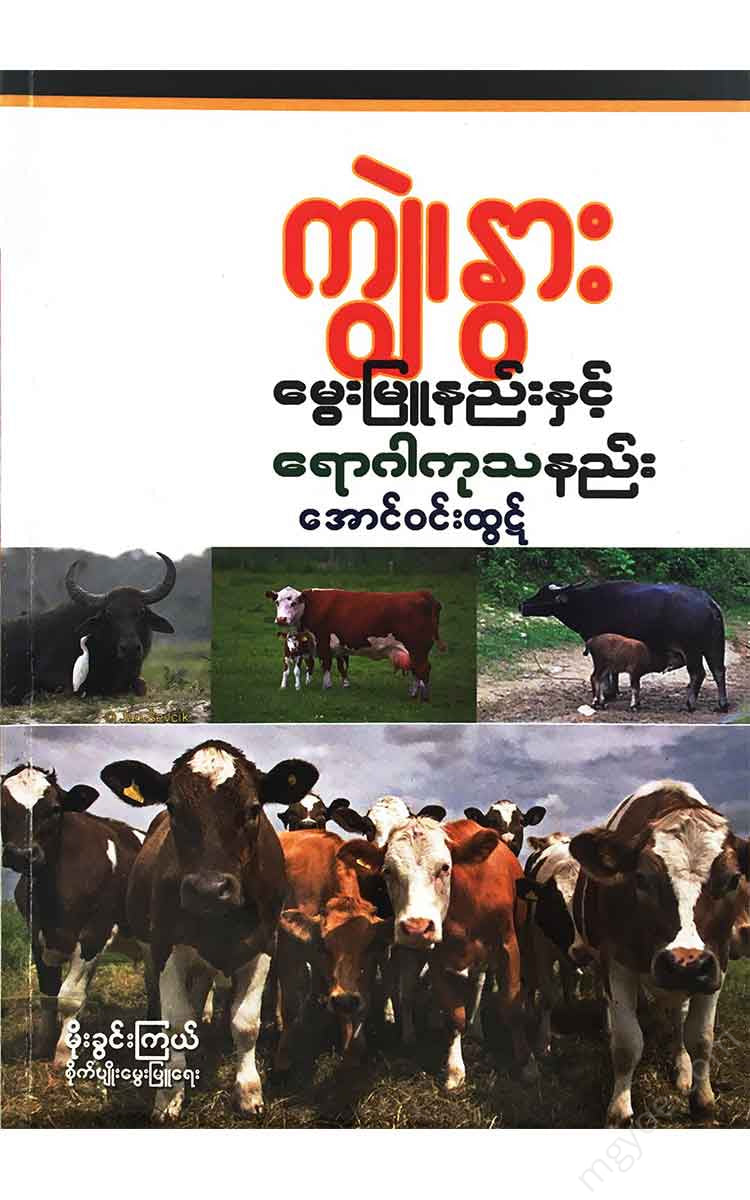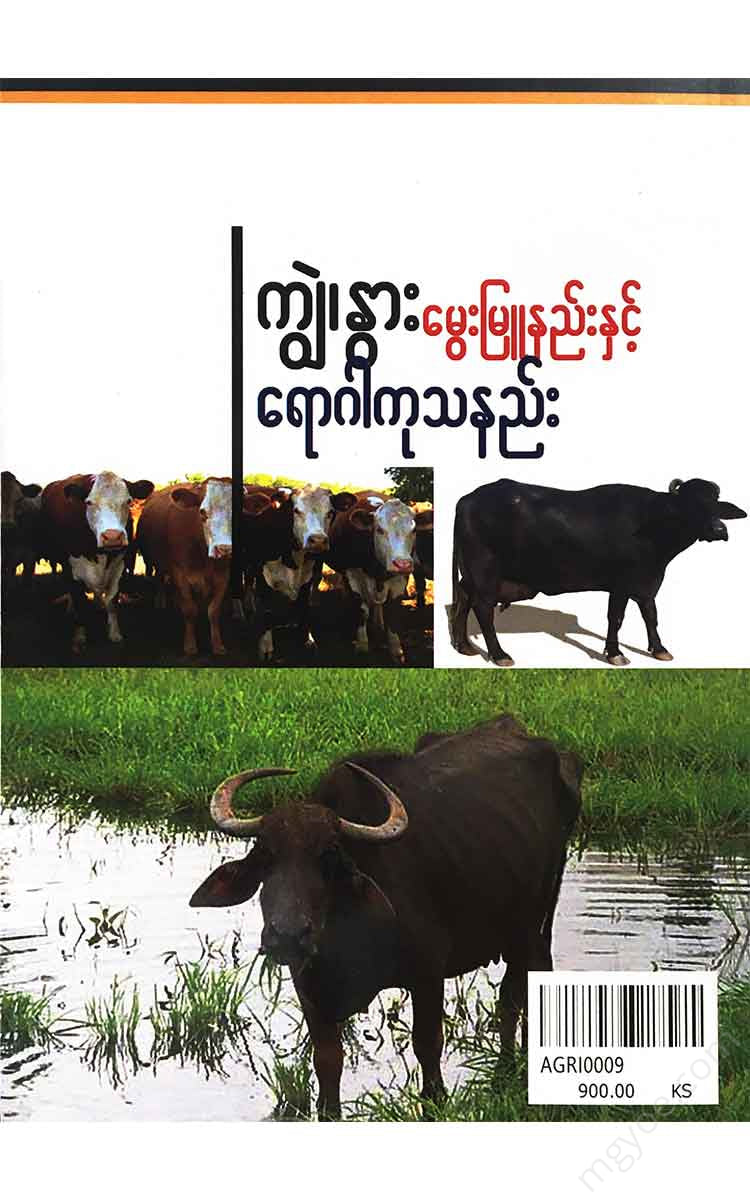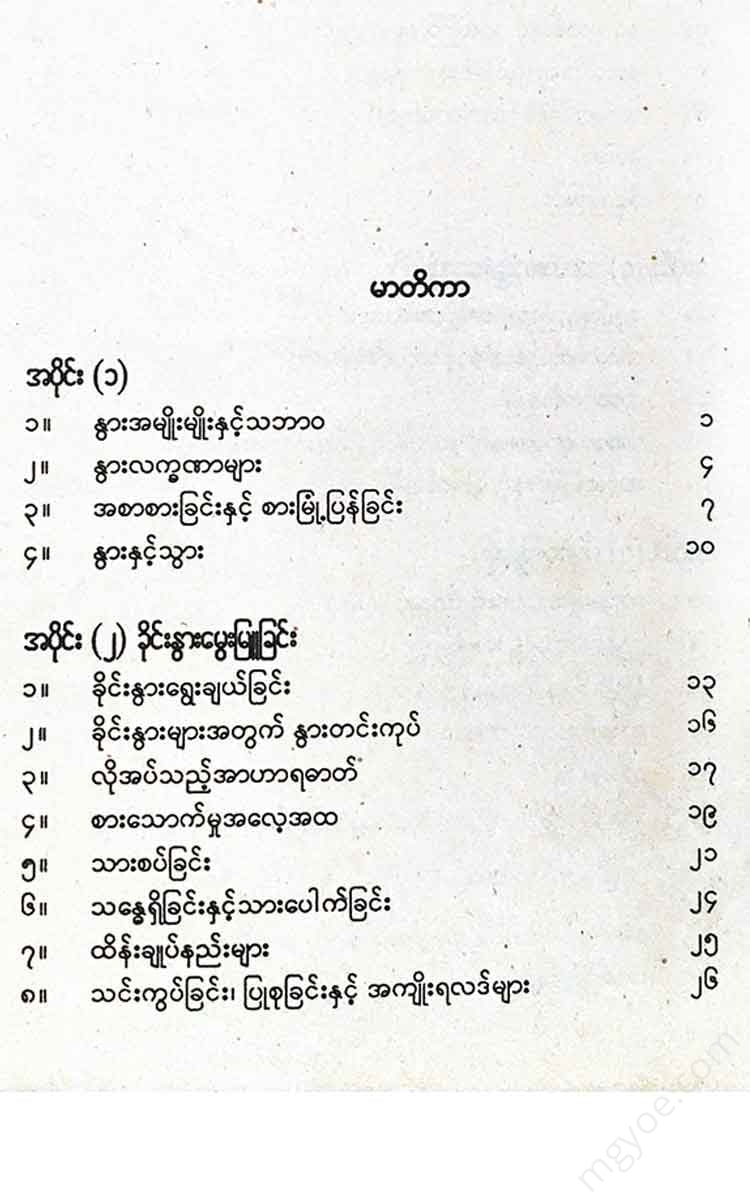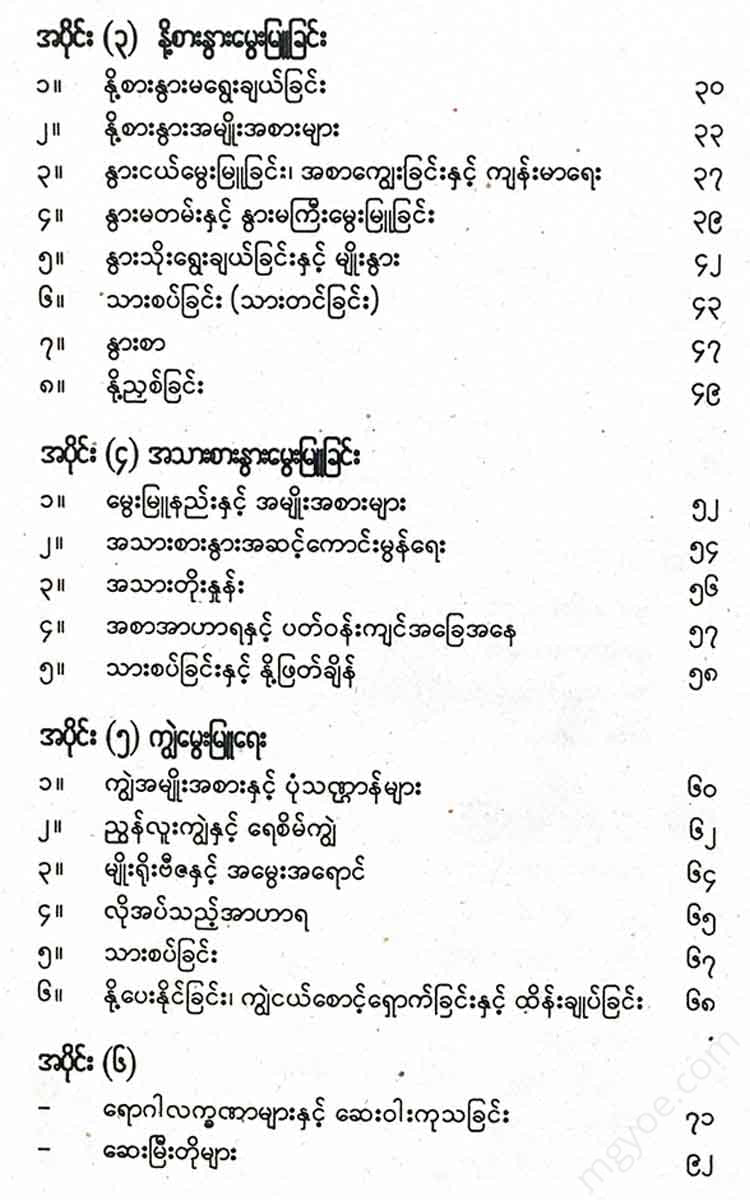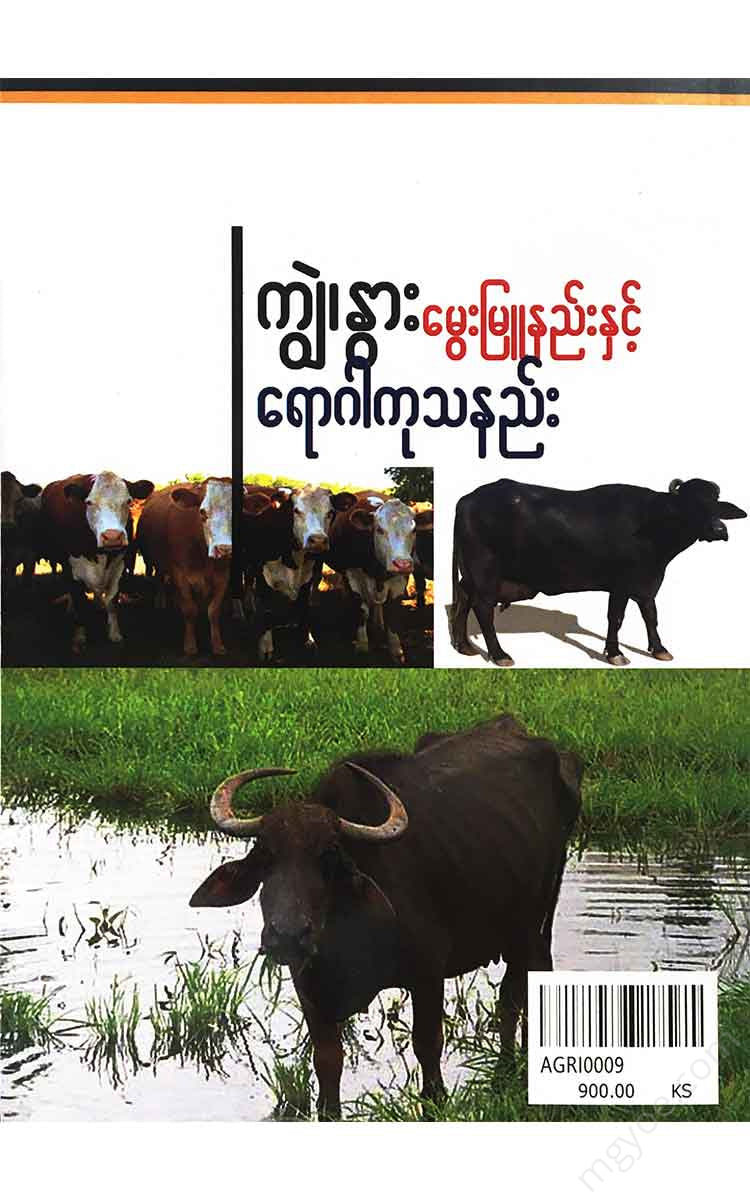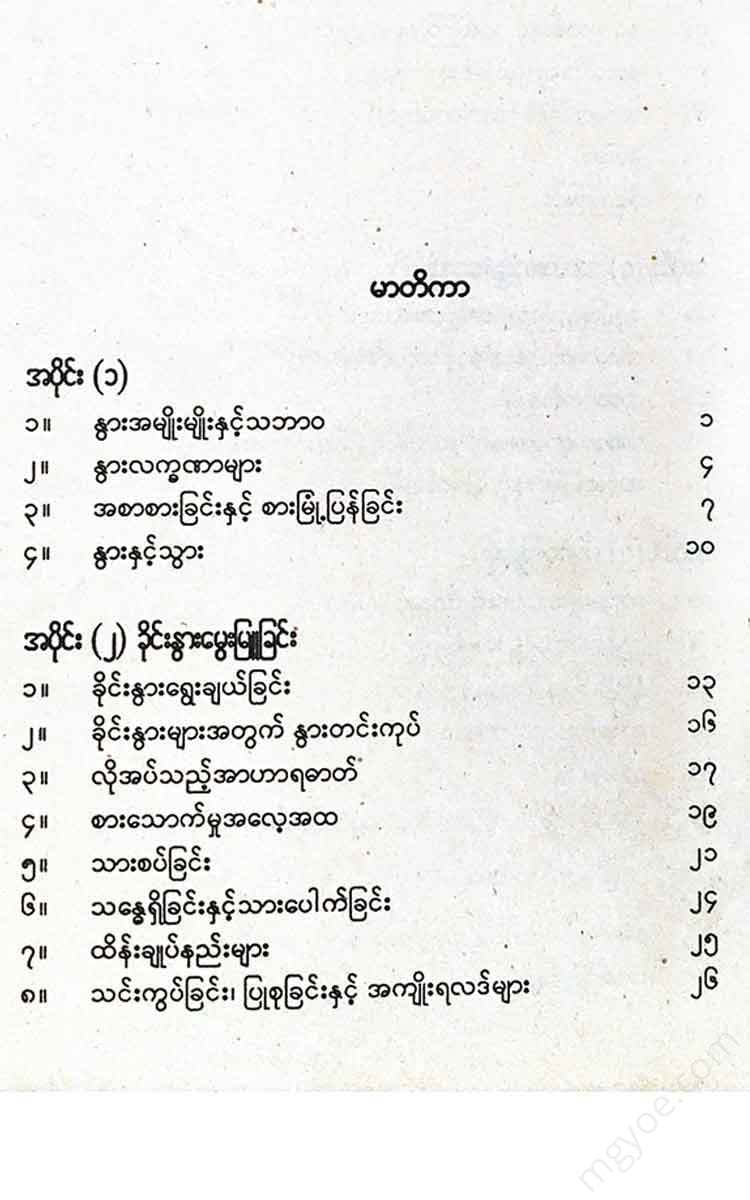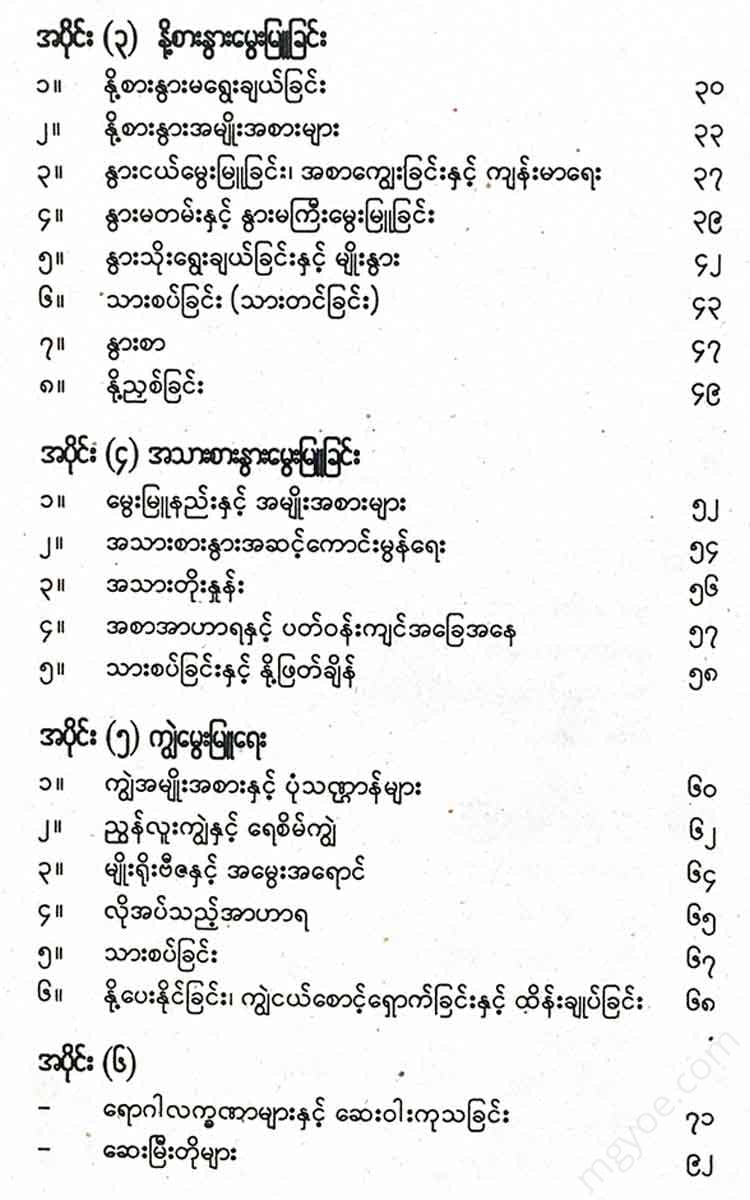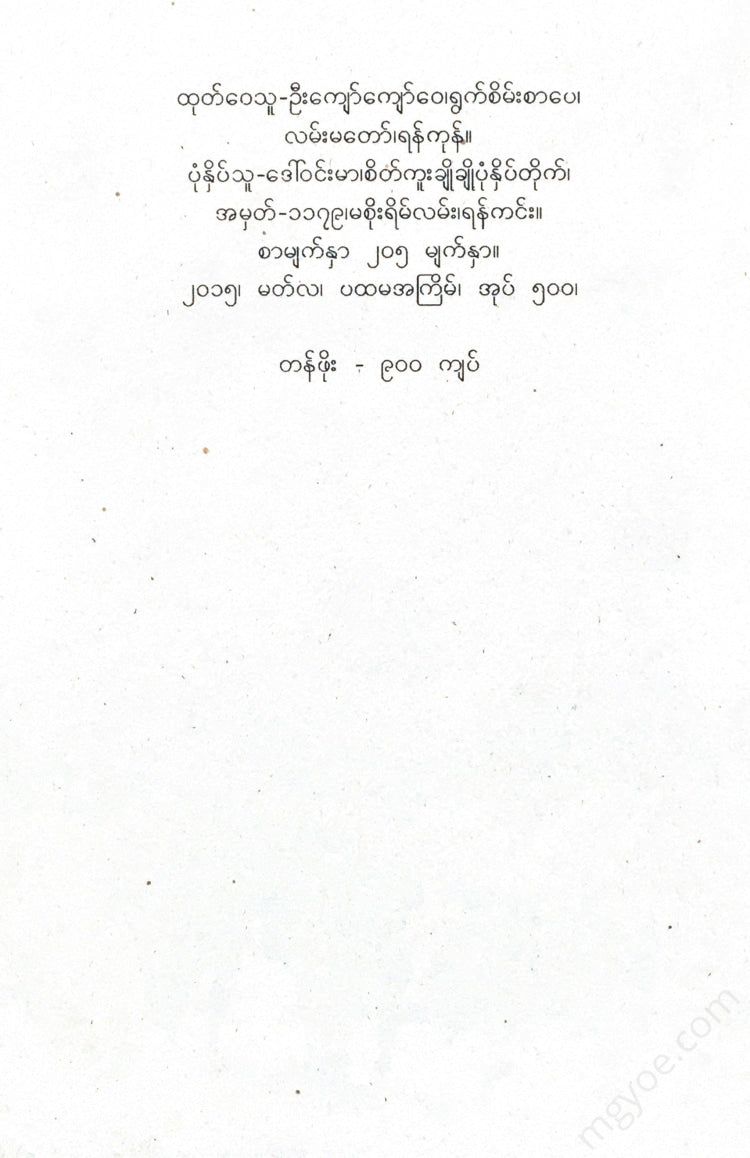စိတ်ကူးချိုချိုစာပေ
Aung Win Htut - How to raise cattle and cows and how to treat diseases
Aung Win Htut - How to raise cattle and cows and how to treat diseases
Couldn't load pickup availability
Part (1)
1. Different types of cows and nature
Cows are divided into four groups based on their coat color. They are:
(1) Red Cow Group
(2) Blue Cow Group
(3) Black bull group
(4) White (yellow) cows are classified as follows, based on the differences in color within a group of cows.
(1) Red Cow Group
Red cow, golden cow, red cow, red cow, red cow, red cow, red cow, red cow, red cow, red cow, red cow, red cow, red cow, red cow, red cow, red cow, coconut shell, yam, red cow, red cow, red cow, yellow
(2) Blue Cow Group
Red blue cow, green blue cow, dry blue cow, yellow blue cow, brown blue cow, white blue cow, blue cow, blue cow with blue spots, blue cow with blue tail, blue cow with blue color, blue cow with blue color, red blue cow with blue color, and blue cow with blue color are the blue cow group.
(3) Black bull group
Black cows, red cows, black cows, black cows, black cows, black cows, black cows, black cows, black cows, red cows, red cows, and black cows are all members of the black cow group.
(4) White (yellow) egg group
Egg, white jasmine, jasmine, egg yellow, egg yellow, egg top box, blue egg, coconut shell egg, egg face, egg tail, egg tail, red jasmine are members of the white and (yellow) egg group.
Cows are mammals. Milking in mammals is a very delicate and complex process. Therefore, mammals are not resistant to changes in weather, food, and environmental conditions.
Foreign breeds of cattle are larger and stronger than Burmese cattle. They are beautiful to look at, but they are not as hardy as Burmese cattle. Burmese cattle are not very big, but they are compact and strong. They are healthy and have fewer diseases.
2. Characteristics of cows
Ancient Burmese farmers often selected their cattle and sheep for breeding based on four main factors. These four factors were:
(1) The nose should be arched and prominent.
(2) You should blow your nose and blow your nose.
(3) The eyes should be bright and clear.
(4) The whole pot must be hard.
If the above four main points are met, further detailed requirements are selected. They are:
(1) Widening of the top.
(2) Roughness of the top.
(3) Bright eyes.
(4) Eye development disorder.
(5) The presence of eight (8) teeth correctly, with the teeth, large and small, erupting in an even row.
(6) The teeth must be strong, free of decay, and long.
(7) The neck of the pot should be thick and the neck should be short.
(8) The neck should be wide.
(9) The neck should be large and hooked.
(10) The chest should be wide, with a high front and a low back.
(11) The spine must be straight.
(12) Do not allow the hip joint to become bent.
(13) The buttocks must be fully developed, and the buttocks must not be exposed.
(14) The tail should be curled up, the tip should be pointed, and the tail should be curled up.
(15) The tail hair must be combed.
(16) The breast must be intact and have four full breasts.
(17) The amount of storage must grow and become strong.
(18) The hooves must be perfectly round like those of a deer.
(19) Do not let your feet or hands touch the ground, and do not let your back foot touch the ground.
(20) The color of the coat should be blue, red, reddish-blue, yellow, brown, and white with a hint of white. The above points are signs of good cattle, so if all of them are fulfilled, it is very good. However, it is not easy to fulfill the above points. Even if the above points are fulfilled as much as possible, the following points should be avoided.
(1) Long lower lip and short upper lip.
(2) Missing teeth or having only (6) teeth.
(3) Loose teeth, saliva leaking from between the teeth,
(4) Shortness of breath.
(5) Soft nose.
(6) Absence of nipples (only two), nipples that are not straight but rather curved to the side or upward. Nipples that are hard like warts.
(7) Tail small, short, and curled.
(8) Crooked, bent, flat back.
(9) Lips are chapped and uneven.
(10) Small, dull eyes.
(11) One eye is red and the other is white, blindness.
(12) Two lines of hair between the eyebrows (above the iris).
(13) The discovery of the sweet potato, the sweet potato, the sweet potato with a sharp edge, the sweet potato with a sharp edge, the sweet potato with a sharp edge, etc.
(14) The sound of the horn.
(15) Cold..
(16) Sweet and sour, fever rising, fever falling.
(17) Short legs, short arms.
(18) Hoof-beating, duck-walking.
(19) Incorrect payment, bad payment, lack of money.
(20) White striped turban, turban cover.
(21) Borrowing money from the principal.
(22) A gecko or lizard-like toy between the wristbands.
(23) Having a sea water mask.
(24) Cow's temper (or cow's illusion).
(25) Having only one testicle.
(26) Small, pointed ears, protruding ears.
(27) The fur is dry and dull.
(28) Including elements such as emeralds, sahain, etc.
(29) The long hooves, the black hooves.
(30) Having only one chin.
However, as the saying goes, it is not easy to obtain a good cow that is free from disease and blemish. Some of the above points are not so important as to be mentioned, but if they can be accepted, there is reason to accept them.
Pure Burmese cattle are abundant in central Burma, and cattle called Shan cattle are found in the Shan highlands. Shan cattle are as good as Burmese cattle and are good at working. However, they are not as tolerant of heat as cattle from central and lower Burma.
It is said that if a red bull is selected, it must have a white stripe on its chest, but today, when selecting a red bull, it is rare to find one out of every hundred.
3. Eating and chewing food
Cows are unique in their eating habits, unlike other animals. Whether in the pasture or at home, they often make a slurping sound when eating. This slurping sound is a way to protect themselves from poisonous animals such as snakes and snakes in the pasture.
Cows eat continuously without stopping to eat. They chew and swallow only a small amount. They eat all day long and then regurgitate the food at night or when they are free to chew it again to digest it. This eating process is called rumination.
Ruminant means that the food cannot be chewed and digested in one go, so it is chewed again and eaten a second time. Ruminant animals have no upper teeth, only lower teeth. In addition, all cloven-hoofed animals have four stomachs. Therefore, any animal that has four stomachs and no upper teeth is a ruminant.
When cows reach the pasture, they tear the grass with their lower teeth and swallow it. When they eat, they chew the grass without stopping to chew it until it is completely broken down. The food that has been eaten in one go enters the stomach through the food pipe.
Of the four stomachs, the cow has three food storage chambers on the left side and one water chamber on the right. They are located in series along the alimentary canal.
Let us call the three food storage chambers (1, 2, 3). The food that has been eaten enters the stomach (1) through the oesophagus. When the stomach is full, food enters the stomach (2). When the stomach (2) is full, food enters the stomach (3). When all the stomachs are full, water enters the stomach (4). When the cows are full, they take out the undigested food from the stomach again during breaks in the work. In this way, each stomach is taken out in turn and eaten.
During the first meal, the rough food enters the stomach in stages, and then is taken out again as smooth food (digested food). Chewing is the process of turning rough food into smooth food.
The way a cow chews is that the rough food in the stomach (1) is gradually taken out through the food pipe and crushed by the tusks in the mouth. Only when the rough food is smoothed and smoothed is the fine food sent through the food pipe into the stomach (1). When chewing like this, each time the rough food is taken out, a fist-sized amount of rough food rises from the stomach to the tusks in the mouth.
In this way, the rough food in the stomach (1) is taken out through the esophagus and swallowed several times until the rough food is gone. By chewing like this, the rough food in the stomach (1) is turned into soft, chewable food. Then, the rough food is taken out from the stomach (2) and chewed. When the rough food in the stomach (2) is turned into soft, chewable food, the rough food in the stomach (3) is chewed again in the same way as above.
Cows chew their food in their three stomachs whenever they have time (free time). They do not stop or sleep until the food is digested. Only when they have run out of food to eat and are exhausted do they rest.
4. Cow and tooth
Cows have (8) lower teeth. There are no upper teeth. There are (6) upper and (6) lower molars (6 upper and 6 lower), for a total of (12) teeth and (24) sides. Including the front teeth and molars, there are (32) total teeth. The age of a cow is calculated by the front teeth.
At birth, the two middle teeth are called central teeth. The teeth that come in on either side of those two teeth are called central teeth, the two teeth that come in on the other side are called lateral teeth, and the two teeth that come in on either side of the side are called permanent teeth.
(7) days - Central and middle teeth
(21) Day: Go to the side
(28-35) days: Tailbone
The permanent teeth do not erupt at birth. They are just a small thing. These teeth are called deciduous teeth. The loss or breakage of deciduous teeth is called tooth decay.
